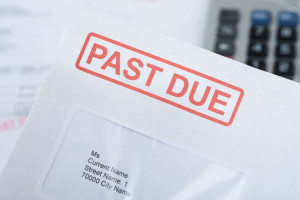 As you navigate the sometimes choppy waters of business, one roadblock you may encounter is the concept of bad debt. When your customers are unable to pay you for services or goods based on credit, it can become a strain.
As you navigate the sometimes choppy waters of business, one roadblock you may encounter is the concept of bad debt. When your customers are unable to pay you for services or goods based on credit, it can become a strain.
One way to address bad debt is to prepare for it to happen in the first place. There are several sound accounting methods you can employ to simply estimate the amount of bad debt you might face. This can bring about some peace of mind so you’re ready to tackle it head on if and when it’s an issue.
The website Investopedia has an excellent article on bad debt that addresses the mechanics of bad debt and also discusses some ways you can place bad debt on your ledgers in order to plan for the future.
What bad debt is and how to record it
First, let’s define bad debt. According to the Investopedia article, it’s considered an expense for you and happens when credit you’ve extended to a customer is now uncollectible. While it doesn’t happen with every customer, you should treat it as a possibility. That’s because extending credit by nature means there’s a chance that it will not be repaid.
It’s also helpful to understand the methods to recognize bad debt as an expense in your business plan:
Write-off: If you’ve heard the term “tax write-off” before, this is probably what it means — a direct allowance for the debt in your ledgers, whether or not a collection is going to take place. This is a method that’s driven primarily by proper bookkeeping for tax purposes. If there is a successful collection later, you can note that in your ledgers.
Matching principle: It’s important to estimate what your bad debt is going to be in order to adhere to accepted accounting principles and to not be caught by surprise if it happens. The Investopedia article suggests that you look back at past experience with bad debt to estimate how much it is going to be in the future.
The best way to estimate
This begs an interesting question, though: what are the best ways to estimate bad debt? There are two ways to do this, according to the Investopedia article. The first is called the aging method and it takes place at the accounts receivable stage. You group all of your accounts receivable by age and apply percentages to each group. Then, you additionally group the results altogether to figure out the estimated amount that may go to collections.
Here’s an example: you have $30,000 in accounts receivable that are less than 30 days overdue, and $15,000 that are more than 30 days overdue. In the past, you’ve had 1% from the “less than” column that were not collectible and 4% from the “more than” column that were not collectible. Add those two percentages together and that is your total for estimated bad debt.
The second example is a little easier: percentage of sales. This is simply taking a flat percentage to the total dollar amount of sales, with past experience as the key to determining the percentage. While it may not be as strictly precise, using a percentage can still be an excellent way to ensure bad debt is recording and allowed for on your ledgers.
Preparing for when “life happens”
We know that you understand that life happens when it comes to your customers, and planning in advance for the possibility for bad debt will help you keep your expenses in order and cause less stress.
We can also help through a variety of services that make contact with your customers an important part of the prevention plan for accounts that may reach delinquency. You can learn more about our solutions for you on our website.

